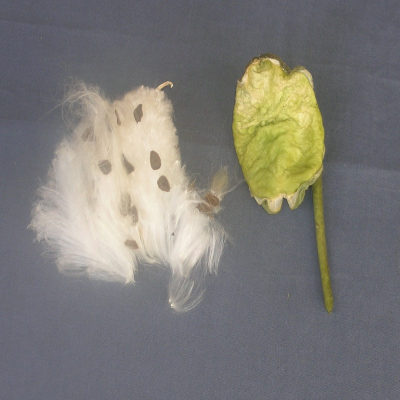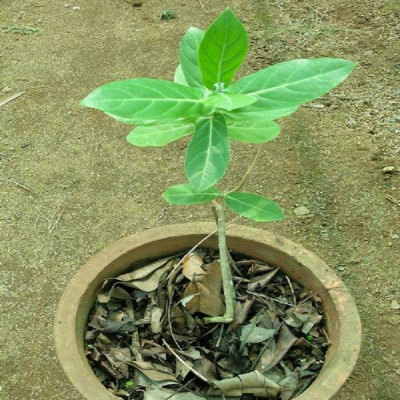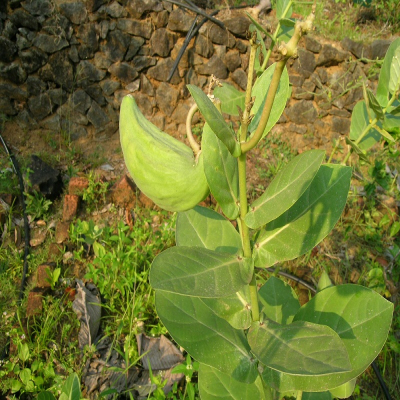Calotropis gigantea (Linn.) R.Br.
Synonyms : Asclepias gigantea Linn
Family : Apocynaceae
Group : 6. Star trees, Anti-arthritic/anti-rheumatic/anti-inflammatory
Parts Used : Whole plant
Vernacular Names :-
| English | : | Gigantic swallow wort |
| Malayalam | : | Erikku |
| Hindi | : | Madar |
| Sanskrit | : | Arkah |
| Bengali | : | Akanda |
| Gujarathi | : | Aakado |
| Kannada | : | Ekka |
| Tamil | : | Erukku |
| Telungu | : | Mandaramu |
Distribution and habitat: It is distributed throughout India and also in dry waste places.
Botany: Large, hardy much- branched milky shrub, very pale in colour, 1-5 cm in height.
- Leaves: 10-20 x 3.8-10 cm sessile or nearly so, thick, fleshy, cuneate- obovate or obovate- oblong with a narrow cordate or often amplexicaul base, smooth above, cottony below.
- Flowers: 3.8- 5 cm diameter, lilac, pale rose or purple, rarely light greenish yellow or white, in simple or compound cymose-corymbs. Pedicels much longer than the flowers, covered with cottony wool; buds ovoid. Calyx divided to the base; Sepals 6 x 4 mm, corolla 2 cm long or more.
- Fruit: Follicles 2 or 1 fleshy, recurved, 7-10 cm long.
- Seeds: Numerous 6 x 5 mm narrowly margined, brown, broadly ovate, flattened, with white tuft of silky hairs at the pointed end.
Properties: Anthelmintic, expectorant, depurative
Chemical constituents: Leaves contain calotropin, uscharin, β- sitosterol, calotropain, β- amyrin, stigmasterol, calotoxin. Roots contain triterpenes.
Uses: Root is used in cutaneous diseases, anasarca, ascites, cough, asthma, bronchitis, gastric secretions. Leaves used in paralysis, arthralgia, swellings and intermittent fevers. Flowers used in anorexia, tumours, purgative and emetic
Agrotechnology
Soil and Climate: It grows well in most type of soil, some times even where nothing will grow, such as sandy barren grounds, but grow luxuriantly on rubbish heaps, waste lands, by the roads, on dilapidated buildings or edifices or similar places.
Propagation: seeds and root and shoot cuttings.



